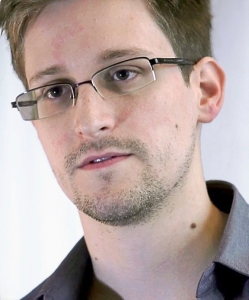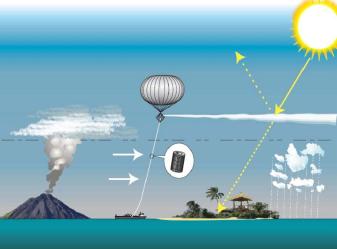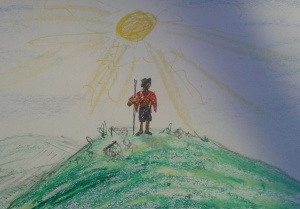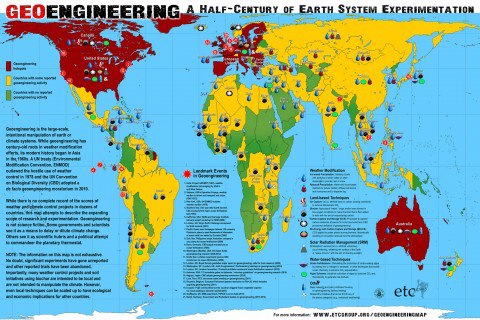 Approximately 71% of the planet is covered with water. Of all the water on earth only 2.5% is fresh water, and only 0.1% is accessible for us humans. Almost 70% of water consumption occurs in agriculture, 23% is used in industry and the rest in domestic consumption. Water means life. Without water we cannot exist. Water scarcity has been long noticed, albeit not in my home country, Norway, and this scarcity has been discussed thoroughly in the Millennium Development Goals (MDGs).
Approximately 71% of the planet is covered with water. Of all the water on earth only 2.5% is fresh water, and only 0.1% is accessible for us humans. Almost 70% of water consumption occurs in agriculture, 23% is used in industry and the rest in domestic consumption. Water means life. Without water we cannot exist. Water scarcity has been long noticed, albeit not in my home country, Norway, and this scarcity has been discussed thoroughly in the Millennium Development Goals (MDGs).
Groundwater is declining worldwide and is emptied faster than it can replenish itself.
It has been commonly been agreed upon that 768 million people lack direct access to water but a study from the United Nations in 2013 suggests that the numbers could be far more dramatic, with an entire 2 billion people having no access to clean and safe water. According to another study (Onda et al., 2012 study), the number of people who do not have satisfactory access to water is even greater, probably in the order of 3.5 billion or roughly ½ of the world’s population. And more than 1/3 of the population, 2.5 billion people, do not have access to satisfactory sanitation.
Limited Resource
Fresh water is a limited resource. We do not get more water, even as it completes its cycle. On the contrary, since we pollute fresh water and fail to clean it sufficiently, only about 70% of the water we use for domestic and industrial purposes can be cleaned and reused.
Certainly, we have solutions, techniques and technologies to conserve water, but it goes slowly, very slowly, in large part because of the major economic interests at stake. Everything is not black, however, if we can get a serious grip on the situation. First and foremost, we must get this on the agenda and sensitize everyone from the consumers to the politicians and decision makers. A shift to less water-intensive products and production, including the energy sector, is crucial. The longer we wait, the less water we’ll have for a steadily growing population.
 Scarcity: life and death
Scarcity: life and death
Water is a driving force in nature. Without water, there would be and there will be no life as we know it. Although we do not even notice the water issue in Norway, this is a growing global problem. São Paulo, Brazil, with its 20 million inhabitants, is now in danger of water rationing. California, the world’s fifth largest producer of crops is in its fourth year of severe drought and in January of this year topped drought statistics since record keeping began. World population increases as does the personal consumption of water. We do not manage to cleanse as much as we pollute. Our consumption of freshwater has tripled over the last fifty years and the need for water increases by 64 billion cubic meters annually. One cubic meter is equal to 1000 liters.
Access to clean water is also a major cause of illness and death in the developing world where 80% of these figures, including three million deaths each year, is attributed to water shortages.
Agriculture and cattle operation
Property dedicated to agriculture currently covers 11% of the world’s land surface yet it consumes 70% of all fresh water. Here is an area in which much water can be conserved. Meanwhile, it is among the worst in terms of helping to conserve. Not only has it embedded itself into people’s lifestyles and habits, but there are major actors — and of course all of the appurtenant lobbying — who want to keep the status quo because so much money is at stake. No one likes others telling them what to eat, or what they should be dressed in. For it is here that we can retrieve the most when it comes to agriculture. One kilogram of beef consumes 15,500 liters of water before it reaches the consumer. It corresponds to approximately 2,400 liters for a burger. And that becomes a tremendous amount of water during a year. This is referred to as Virtual Water; that is, the total water math for any product, or what it costs in water to produce.
I will not go into too many individual products and their water consumption, but some are really worth looking at, since we need to save water and consequently also change our consumption. 2/3 of Norway’s water consumption, i.e. Virtual Water, is happening abroad, according to the research site forskning.no, so it is safe to say that the world’s water problems also affect us in the highest degree.
I Have a Beef with Beef
Beef is both a climate offender and a water baddie. No other meat comes close in terms of water consumption. One kilogram of pork requires 4,800 liters of water, poultry production “only” 3,900. Meat production has risen by incredible 600% since 1950, when the world’s population was at 2.5 billion people. If there is a positive in this picture it is that poultry, which consumes the lowest amount of Virtual Water, has increased the most. Still, about 300 million cows are slaughtered annually. When one looks at such numbers, it makes sense to try to adhere to a meat-free Monday, an idea which the UN has promoted for several years. Admittedly, it is the greenhouse gas emissions of methane and not water consumption which has been the focus of Meatless Monday but why not help two problems at once?
Cotton, hemp and bamboo
Let stick with farming a little more. The garment industry scores high on the list of the ten most water-intensive industries. Cotton takes up between 2.5 and 5% of arable land, but has a huge consumption of pesticides, around 16% of all that are used worldwide. In addition to pesticides are all the chemicals used in the processing. Organic cotton production represents only a small fraction of the total, around 1%. But we are talking about water, and this is where it gets really interesting. It takes 11,000 liters of water to produce one kilogram of cotton (on average a pair of jeans weighs about 800 grams). 80% of the cotton grown is used for clothing. How can we change this picture? The answer is as simple as it is difficult: We have alternatives to cotton! The problem is that the cotton industry is is an immensely powerful lobby. The good alternative is not polyester (which already has a large market share in the garment industry) or other energy-intensive artifical fibers which are based on oil, but something as simple as hemp and bamboo. For one kilogram of finished processed hemp, it only takes 2150 liters of water, mostly in the form of rainwater, not irrigation. These numbers are about the same for bamboo. Unfortunately there has been no appreciable development in production methods for hemp during the last fifty years or so, much of this due to the ban which many countries have had. Hemp can grow almost everywhere, from the Arctic to the equator. The fibers are also significantly stronger than cotton, which is good for consumers, but not for profit, since hemp-products are more durable and do not need to be replaced as often. Hemp requires no pesticides, but it does need some fertilizer.
Bamboo is another good alternative to cotton and features some absolutely unrivaled qualities in garment production. There are more than 1400 different bamboo species, but it is the Moso Bamboo (Phyllostachys Edullis) that is used in garments. Thankfully, this is not a species that is popular among the endangered pandas. Bamboo is one of the fastest growing plants in the world and can grow up to one meter per day. In addition, it requires no fertilizer or pesticides. Bamboo grows without irrigation is a very hardy plant. It can grow in most parts of the world.
Bamboo plants develop an antibacterial agent, Bamboo Kun, which makes it almost 100% resistant to fungus as well as repellent to insects — it simply works as a pesticide in itself. Not only that, it acts as an antibacterial agent in clothings too.
Bamboo clothings are soft and can be compared to the feel of silk on the skin. The first time I bought some bamboo socks, the saleswoman boasted that I could wear them 5 days on a row without them smelling. I must admit that it was not an appealing thought to wear the same socks for five days, even knowing that it would be saving water, but in connection with this article, I had to test it out. It was difficult dealing with the mental barrier, but her claim was true. After five days there was no more odor than normal, i.e., it was the equivalent of wearing cotton socks for one day.
In Costa Rica, a small country in Central America — one with the largest acreage of nature reserves by percentage, they have figured out that the use of bamboo for housing construction will reduce the use of arable land with about 12% compared to the construction by ordinary wood and just takes 1/8 of energy consumption compared to cement and 1/50 of that consumption when compared to steel. In many contexts bamboo is as strong as steel, which was proved by the earthquake of 7.5 on the Richter scale in 1991. The houses built with bamboo —built for a large-scale social housing project which raised the amount of affordable housing for the poor, located in the epicenter of the earthquake, were undamaged, while other nearby buildings lay in ruins. Bamboo can also be used for reinforcement of concrete and hemp can be used to make “hempcrete”; old natural materials and techniques that can have a renaissance and save both water consumption and greenhouse gas emissions.
Bamboo and hemp have an incredible number of useful characteristics, I have mentioned only a very few. They are also incredibly helpful plants in the larger perspective of climate change, including sucking up CO2, but there is too much to mention here and now.
Paper and steel
Both hemp and bamboo can be used to produce paper, another one of the top ten water-intensive industries. Here there will be much to gain from a larger perspective of climate change, not least of which would be shrinking the CO2 footprint. Both, but mostly hemp, have been used in paper production for over two thousand years, long before paper from cellulose of wood took the lead role.
Steel production comes just after the paper and textile industry on the list of water-intensive industries.
Climate Smart Agriculture
As mentioned above, agriculture consumes a huge amount of water. Cattle farming is mentioned as particularly water intensive — and water polluting, but what about agriculture? This is an area of great savings potential but it is one that requires restructuring. Today, small-scale farmers feed 70% of the world’s population. Although irrigation systems have improved, we should look at new methods and techniques to reduce water consumption further. The future is in developing methods that are substantially less water demanding than traditional agriculture.

The Omega Garden system rotates the plants around a bulb. They claim that it yields three to five times the weight of plant per watt of electricity used, compared to conventional flat systems. Their commercial carousel system produces as much as a 1500 square foot greenhouse in only 150 square feet, and their LED system just sips electricity. (Inhabitat – Sustainable Design Innovation, Eco Architecture, Green Building)
Hydroponics
Hydroponic cultivation is amazingly – almost unbelievably– water conservative. It is not unusual to have a 70-90% reduction in water, while at the same time yielding an increase at a corresponding rate. Hydroponic yields have been ten times as large as the conventional farming of certain plants including tomatoes in the US and Canada. With this technique herbicides and pesticides are avoided and therefore end products are cleaner and safer for the consumer. The plants also grow substantially faster. The disadvantage is that it is more labor intensive than modern mechanized large-scale cultivation and the initial investments are significant, which disqualifies such enterprises for many producers in poorer countries.
Back to the roots
Organic and ecological farming are both water-stingy and far less water pollutant. Unfortunately, due to widespread and partly inconclusive data, the belief that such farming can supply us all with enough food has been destroyed. In the rich, industrialized world organic practices produce an admittedly a lower yield based on land use – only 80% compared to conventional agriculture. But when looking at the rest of the world, the developing countries (which after all make up the majority of the worlds landmass) show quite a different picture. A seven-year study done among 100 Indian farmers showed that such enterprises actually gave 20% higher yields than conventionally run agriculture!
Root Intensification
System of Root Intensification (SRI) is a composite system of different techniques. It can be used in conventional farming, though it functions best and is used most commonly with organic and ecological farming. Though it is slightly more laborious in the pre-process, there is an enormous impact of increased production and reduced water use.

Climate change adaptation: SRI using less water has larger root system. From Andhra Pradesh, India.
The basic principles of SRI are:
- – Carefully managed cultivation of sprouts
- – Early transplantation of 8- to 15-day-old seedlings
- – Simple planting with large distance
- – Early and regular weeding
- – Carefully controlled water management
- – Use of natural compost as much as possible
Separately, these methods have been used for a long time. Together they constitute an extremely powerful method. The biggest advantage is that increasing returns are achieved by using less water. The amount of seed is also greatly reduced — by up to 80-90% savings. Neither fertilizers nor pesticides are required. About 250 scientific papers on SRI have been published in the last ten years. It is estimated that somewhere between four and five million farmers are using SRI today, with good support from authorities in countries like China, India, Indonesia, Cambodia, Vietnam and Sri Lanka.
In height
Vertical farming means cultivating in tiers, in structures like stories in a building. It goes without saying that it is very space efficient. Combined with hydroponics, one can produce huge amounts of vegetables almost anywhere and with low water consumption. This can be a good complement to traditional farming where certain plants such as rice and wheat, require large land areas and do not fit into future greenhouses. The food can be locally grown where people live and becomes homegrown; not even short-traveled. Since it takes place indoors such cultivation can be carried out everywhere but it requires some investment; artificial lighting and a certain degree of automation, preferably a lot. LED-lights are commonly used. Vertical farming is a modern and somewhat sterile culture method which might fit best into an urban environment, but it is one that may come to play a major role in the future, at least if migration to cities increases.
Power needs water
Virtually everything we do uses water and industry is of course no exception. The energy industry is high on the list of water consuming sectors with its 15% of the total, surpassed only by agriculture. According to the International Energy Agency (IEA), the need for water in energy production will double by 2035. More precisely: Water extraction will increase by 20%, while water consumption that does not go back to nature will increase by more than 85%. It is important to see where the energy is produced. Often it is created in clear competition with human needs for water in areas that are already water-stressed. On top of it all, it is an industry that contaminates water. Norway is in no way lagging behind. The Norwegian state owned Statoil is engaged both in tar sands and fracking (hydraulic fracturing), or shale gas extraction, as it’s so nicely referred to in Norway. Both are incredibly dirty businesses placing a heavy burden on water resources as well as having a tremendous effect by contaminating groundwater.
Among renewable energy sources, wind power is the most water efficient.
The car
When it comes to contaminating groundwater, motor oil is among the worst offenders, particularly in the US where it is considered to be one of the two biggest water polluters. One liter of motor-oil can contaminate 1 million liters (about 250,000 gallons) of water. The safest way to remedy this, aside from avoiding spills, is to change to plant-based motor-oils.
Leaks
When it comes to our small domestic consumption, much water used simply runs into the ground. Old and bad pipes and infrastructures are the main reasons, especially in poorer countries. This is obvious even in Europe with vast differences between the very countries that make up the EU. The richest countries have basically least amount of these losses, while the poorest have the greater. Globally, bad water pipes contribute to an incredible loss of improbable 35%.
 Desalination
Desalination
There are over 21,000 desalination plants in more than 120 countries around the world. Since the turn of the millennium, the output of water from desalination plants has tripled. Yet this represents only a fraction of the total freshwater available and the price of production is high. The desalination process takes enormous amounts of energy. The energy consumption for one cubic meter of water is around 0.37kWh per from rivers and lakes and about 0.47kWh for groundwater, while a desalination plant uses between 2.58 and staggering 8.5kWt to conjure as much water. In fact it is far less energy intensive to clean up wastewater — which has been done on a large scale in Australia and Singapore — than to desalinate water.
A huge effort is underway to research and explore new techniques to create fresh water. One of the most exciting pilot projects is in Chile where the goal is to transform fog into clean water, but so far desalinization is showing more significant promise. Nevertheless, small treatment plants or even water purifying “gadgets”, can be of great benefit where lack of clean water is greatest and where every drop counts.
While water has received less attention than climate change in general, water shortages will become more noticeable in the very near future. Restructuring our consumption patterns may be crucial for continued access to clean water. An average consumer in developed countries uses about 5,000 liters of water daily, while a vegetarian consumes approximately 2700 liters. Perhaps it is time to promote more than just one meat-free day a week?
— Ole A. Seifert
****************************************************************************************************************************
Recommended reading, especially for those who wants to know more detailed about different products, especially the water consumption of food and beverages:
Tony Allan (professor): Virtual Water – Tackling the Threat to Our Planet’s Most Precious Resource
****************************************************************************************************************************
This story was on print in the Norwegian weekly paper Ny Tid (Modern Times) March 18 2015.
Thanx to Sean Mazzetti for editing!
Read more about System of Root Intensification:
https://futopiapress.wordpress.com/2014/04/03/%EF%BB%BFin-with-root-intensification-out-with-gmo-2/



























